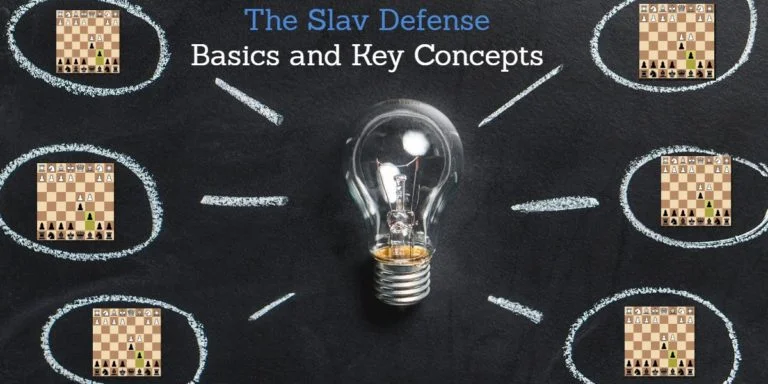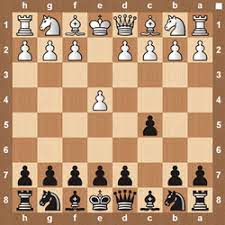Every game needs a good attack and defence. Moreover, I believe that the defence is the most important. To become a master in any game you must master its defence. In this article, we will briefly go through many types of chess defences. So let’s start!
Let’s learn all these types of chess defences step by step!
French Defence
The French Defense is one of Chess’s most trusted events, popular from the newcomers to the influential masters at all levels.
Many leading grandmasters in the past, Mikhail Botvinnik, Viktor Korchnoi, Tigran Petrosian, Rafael Vaganian and Wolfgang Uhlmann, have used this method. Wesley So, Ding Liren, and Alexander Morozevich as some of their major opening weapons use this defence.

Steps To Use This Chess Defence:
French Defense meets 1.e4 on 1…e6, and gets ready against the e4 pawn on 2…d5. Black blocks in their light-squared bishop but gains a powerful pawn chain and the potential to counterattack. Furthermore, You can also look at the above image to get a better idea. Coming up, We will also talk about this defence in further detail in our forthcoming articles.
Pros :
- To begin with, French Defense has a very high score in the chess databases and is considered one of their most successful openings. You automatically maximize your chances of winning statistically through playback.
- Moreover, it has sharp counterattacking possibilities
- Importantly, the French defence doesn’t force you to learn an endless number of ideas. Identifying the key strategic ideas and plans is much more important.
Scandinavian Defence
To begin with, only rarely and for a good reason is the Scandinavian defence used at higher levels. Although Grandmasters of the Scandinavian Defense remain as a surprising weapon from time to time, Alexey Dreev and Viswanathan Anand can generate very dangerous threats in the early opening, if they play very actively with a strongly outlined plan in mind.

Black meets 1.e4 in the Scandinavian Defense by asking the e4 peon immediately and attacking it with 1….d5. Often this opening leads to Black’s difficult, scrappy play. The image demonstrates this play.
Pros:
- A provocative opening
- Black opens the game immediately
- Usually both black bishops have freedom
Cons:
- Black loses time recovery after capture 2.exd5
- The white d-pawn usually goes to d4 later and gives more space.
- Black is in danger of a rapid knockout because they are losing time
Caro-Kan Chess Defence
It lasted a few years, but by the efforts of the 3rd World Chess Champion, José Raúl Capablanca, the Caro-Kann was made widely popular in the early 20th century. The Caro-Kann was associated with the incredibly sturdy style of Capablanca, as he apparently would use it to draw on Black. But don’t fool yourself – the Caro-Kann is not just an exceptionally solid choice for Black against 1.e4; if White isn’t fully prepared, it can also be dangerous.
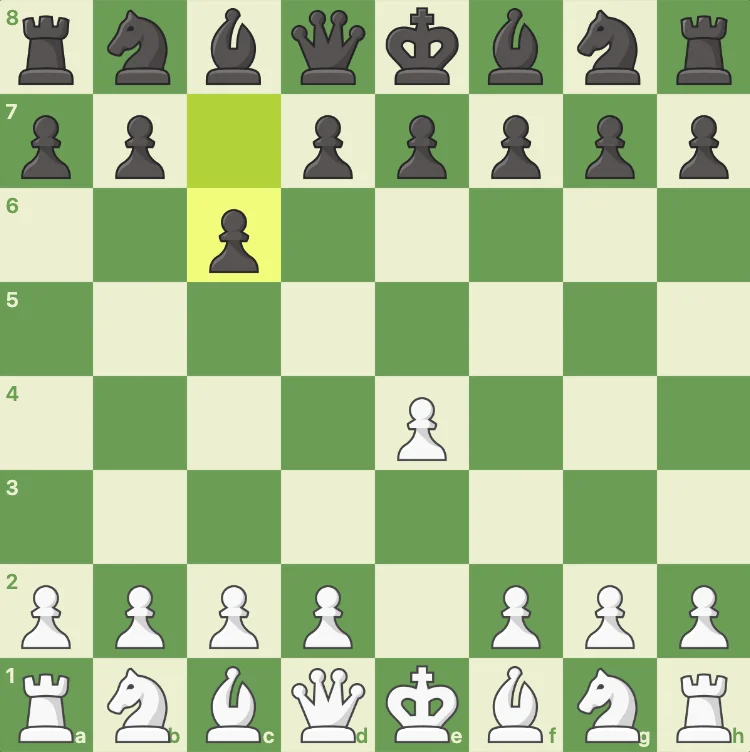
Indeed, in recent games, the Caro-Kann Defense has brought Black some excellent results. Some examples are as follows:
- London Chess Classic in 2016, Nakamura succeeded in beating Topalov with caro-kann.
- At the 2016 Dortmund Super Tournament, Caruana crushed Najer with Caro-Kann Defense.
- At the World Cup in Tbilisi in 2017, Ivanchuk used Caro-Kann to defeat Kramnik.
- In 2018, in Saint Louis Rapid and in Litz, Mamedyarov and Caruana won several times with the Caro-Kann.
Pros:
- Sound pawn structure
- Free light-squared bishop
- Safe
Cons:
- minimal space for black
- Slower development
- Less complicated game
Sicilian Defence
To begin with, The Sicilian Defence is the most popular protection against the 1.e4 opening and is extensively used on top-ranking games. It’s a very aggressive defence and at the centre, the double buckles of e4 and d4 are denied. Actually, many chess champions prefer to begin with 1.d4 as the Sicilian Defense is playing with 1.e4.
Mostly, the black c-pawn is exchanged and the semi-open c file for black is opened to get your queen or rook and to put pressure on the queenside attacks.
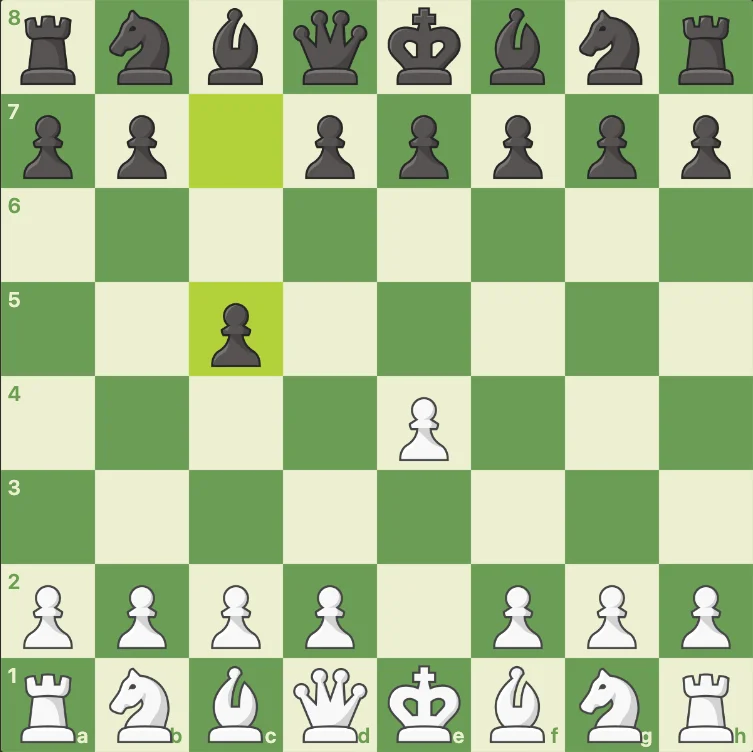
Pros:
- Unbalances the game
- Gives Black good chances of attack
- Great opening when you need to play for a win
Cons:
- White has many ways to meet the Sicilian
- In the main variations White gets great attacking chances
- There is a lot of theory
Alekhine’s Defence
To start with, First introduced by the fourth world champion, Alexander Alekhine, to master chess, a radical defence. Black attacks the E4 pawn immediately with his knight, tenting White to move his centre pawns forward in the hope that they prove over-extended.
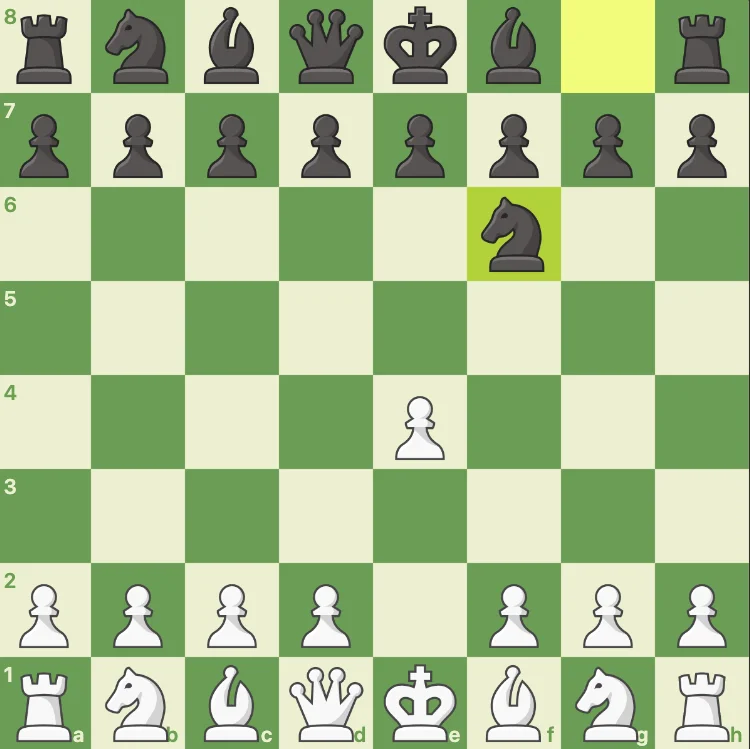
If you take the challenge of Alekhine Defence your courage will be rewarded with interesting, unbalanced middle-class positions.
You have every chance of playing for a win with Schwarz in The Alekhine Defense.
Many people will try to warn you that the Alekhine Defence is not sound, but it is played today and not least by Magnus Carlsten, the current world champion.
You are committed to playing actively with the invigorating defence of Alexandria or whites will almost certainly guarantee your defeat by playing central control and space advantage.
Pros
- Originals Tricky
- Less common, so opponents will not know as much of the adverse effects:
Cons
- White wins central room
- Black must move the knight multiple times
- Risky
King’s Indian Defence
To begin with, the Indian Defence of the King is an ultramodern defence involving the fianchetto of the black king’s bishop in combination with…d6 (not …d5). Black enables White to construct a strong pawn centre, which then hits back with movements like …e5 or …c5.
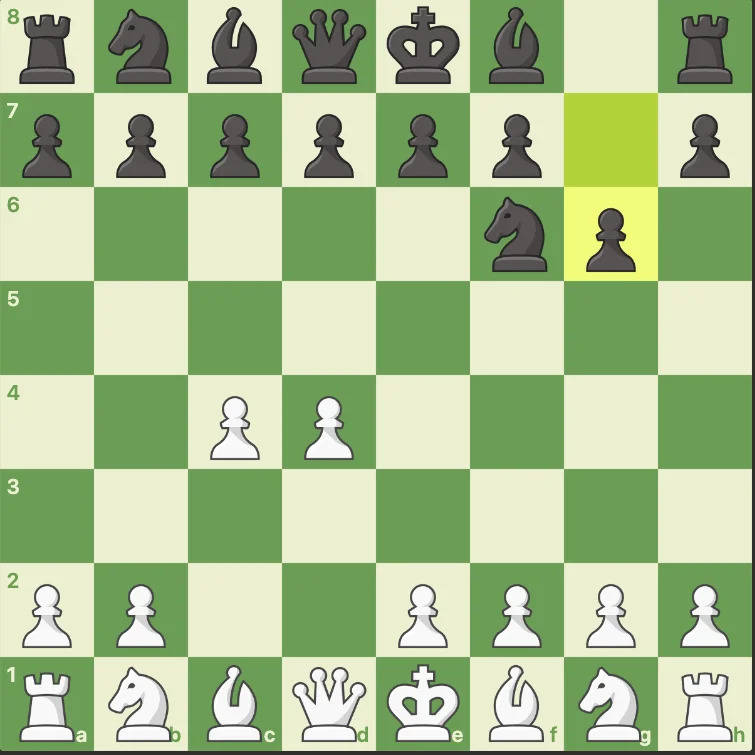
Although the Kings Indian Defence is a very solid opening for black it is also very passive in the early stages and if you are a very aggressive player you will not enjoy this opening. Much like any opening in chess, though, the middle stages of this opening will allow for many opportunities for counterplay.
Pros
- Strong opening leads to amazing positions
- Black’s attack on the white king Cons often happens
Cons
- White generally benefits from space
- White typically gets heavy pressure on the queenside
- All styles of players have decent answers.
To end, thank you for reading the article we will learn about these chess defences in further articles, so stay tuned. We hope you learnt something new!
Share with your friends


